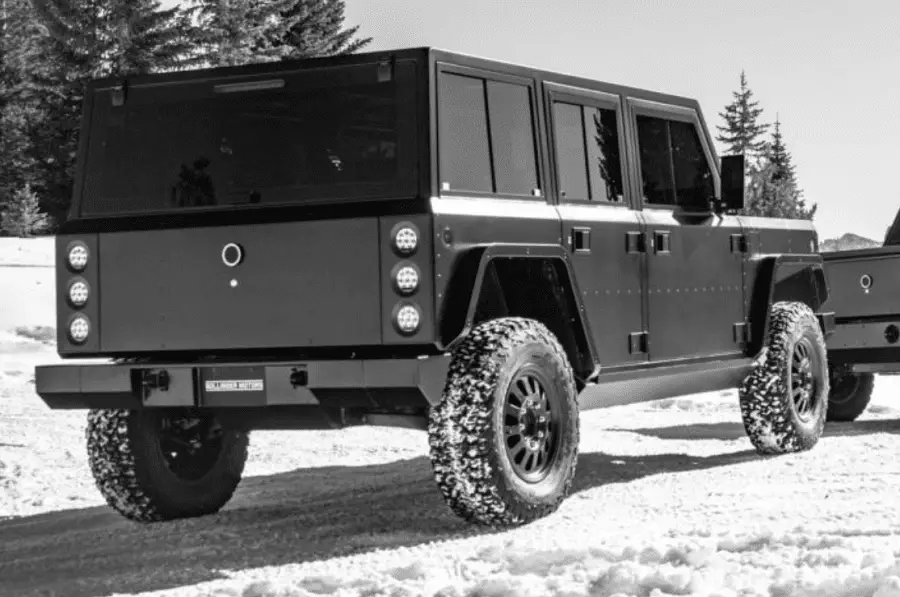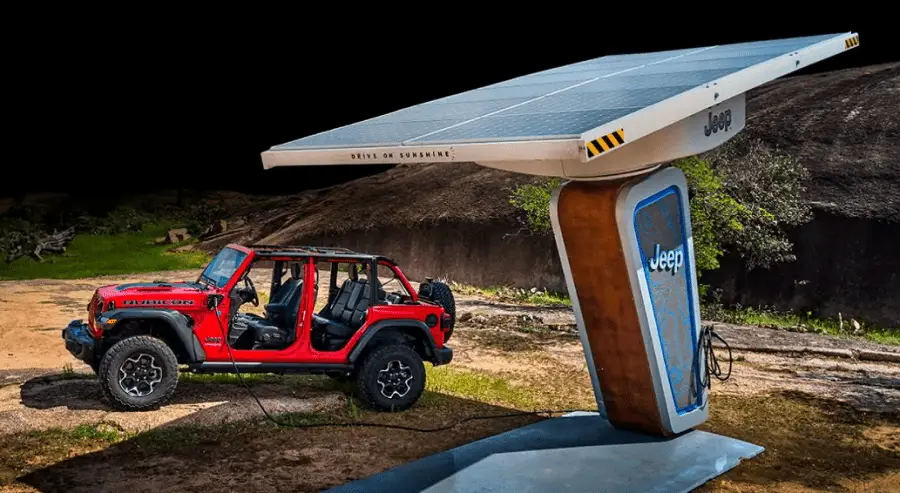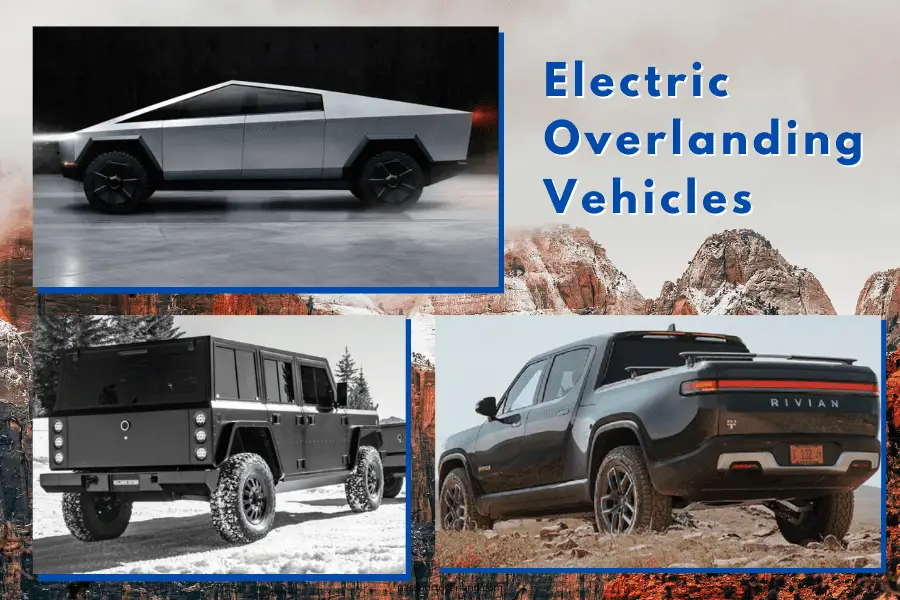
Electric vehicles first came to the United States in the 1800s. It was when William Marrison of Iowa invented the first electric car that could carry 6 passengers and drive at 14 miles per hour. This great invention paved the way for car companies to design their own electric cars.
Are electric overland vehicles on the rise and becoming more popular? Yes, and the Rivian R1T, Bollinger B1, and Tesla Cybertruck are just some of the evidence.
Because these cars can both reduce air and noise pollution from road transportation, the Department of Energy supported this innovation, further speeding up the development of EVs. Today, Tesla has already produced 1 million electric cars, and the popularity of electric cars has already reached the world of overlanding.
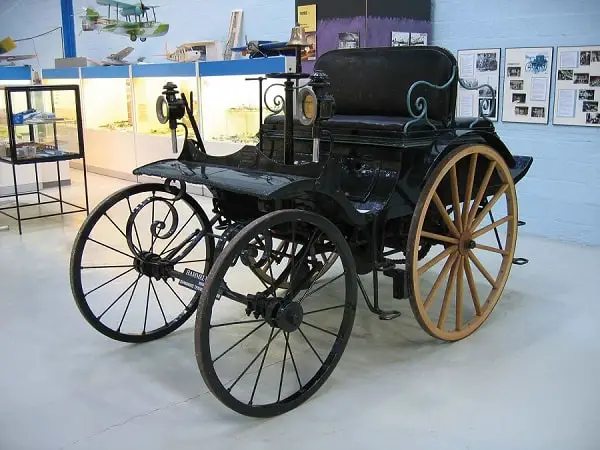
In fact, many automakers have already announced plans to release their own electric SUVs and trucks in the next few years.
Just by looking at the history and the rapid development of EVs, you can already tell that the future of electric overland vehicles looks very promising. It will be just a matter of time before they completely take over the world of overlanding, and many will now shift from traditional vehicles to environmentally friendly and cost-effective EVs.
What Are the Trends With Electric Overland Vehicles?
Electric vehicles are now trending after some car manufacturers released teasers of their own electric SUVs and trucks. Now the world of overlanding is becoming more intrigued and curious about this great invention.
Who doesn’t want a vehicle that produces no greenhouse gas emissions and is also perfect for camping and offroading? The popularity of EVs is exploding more quickly. Below are the trends with electric overland vehicles to keep you updated.
Rivian R1T
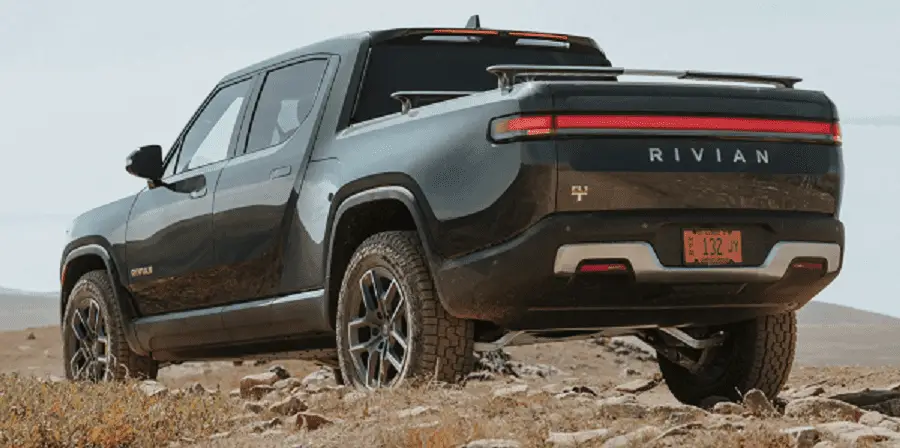
https://rivian.com/r1t
The release of the Rivian R1T (https://rivian.com/r1t) in 2018 marks a major step in the integration of electric vehicles into the world of overlanding. The Rivian R1T impressed many overlanders at the Overland Expo West in 2019, where it not only boasted about its offroad driving capabilities but also its camp kitchen that slides in and out of its gear tunnel.
This EV is a battery-electric vehicle, which means that its rechargeable battery is what powers its electric motor. It’s no ordinary electric car because the R1T can travel up to 314 miles when fully charged. It has a ground clearance of 14.9 inches and wheels of 21″. It has a wading depth of 3 feet for easy driving in mud and river crossings.
Lastly, it has 62 cubic feet of storage space for all your camping gear.
Bollinger B1
Bollinger Motors (https://bollingermotors.com) manufactures consumer and commercial high-quality electric trucks. They are based in Oak Park, Michigan. In terms of overland electric vehicles, their B1 and B2 models stand out.
When the Bollinger B1 was first released in 2017, it immediately drew attention, receiving both positive and negative responses. It has a range of 200 miles, storage of 113 cubic feet, ground clearance of up to 20 inches with the available air suspension, and 35″ tires.
But some commented that it needs improvement in the design and construction and that it’s way too expensive at a price of $125, 000.
Tesla Cybertruck
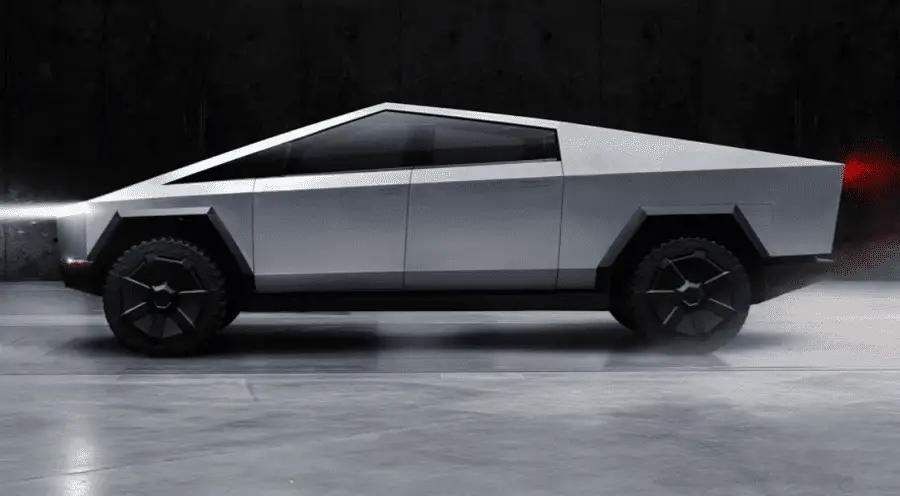
https://www.tesla.com/cybertruck
Tesla is based in California, and when it comes to electric vehicles, they are the leading company in the USA. It was in 2008 that they first created their own model of the electric car. You’ve probably heard of their undefeated EV models X, Y, S, and 3. They are the best-selling EVs on the market.
Of course, they also have an EV for camping: the Tesla Cybertruck. Just by hearing the name and knowing the brand’s reputation, you can already imagine how capable this EV is offroad.
Introduced in 2019, the Tesla Cybertruck is like a sportscar designed for camping. It features a range of 500 miles, storage of 100 cubic feet, up to 16″ ground clearance, and a strong and high endurance exterior shell.
Future Overland EVs
When it comes to overland vehicles, the Jeep Wrangler is the epitome and the standard. Jeep has the most rugged and capable overland vehicles, so when it comes to overland EVs, of course, they must have an entry as well.
Jeep started to tease their consumers in 2021 with a sneak peek of the Jeep Wrangler 4xe, which is their first-ever electric-powered 4×4. They plan to release this model on the market in the year 2023.
Developments in Charging Stations
The increasing demand for electric vehicles necessitates accessible charging stations. These RVs won’t work without electricity, so it just makes sense that the government is currently investing in the installation of charging stations nationwide.
The USA has almost 43,000 charging stations, most of which are located in California. However, overlanding involves traveling to remote places as far as Alaska, and these places are not ideal locations for charging stations. One solution is solar panels.
Can you charge an EV using solar panels? Yes, solar panels have the power to charge an EV. Some overlanders have already tried installing solar panels on their vehicle’s rooftop to power their EV. But this method is not practical because it requires a lot of solar panels.
The brand Jeep does not only plan to release their first-ever EV for overland travel but to reinforce the Jeep Wrangler 4xe, they also plan to install solar-powered charging stations in remote places. This way, you can travel as far as you want with your EV.
What Are the Pros and Cons of Using an Electric Overland Vehicle?
Electric cars are the new trend when it comes to road transportation. One remarkable contribution of these cars is that they are environmentally friendly. In fact, this is the sole reason why many consumers prefer them over traditional vehicles. But did you know that EVs are more than just being ecological?
Pros
The only positive aspect of EVs that people notice is their being ecological. Yes, they emit no air pollutants and produce less noise on the road, but aside from that, electrical vehicles are also remarkable in ways such as:
1. Comfortable Ride
Electric vehicles offer the most comfortable ride as compared to vehicles that run on gasoline. First, they produce less noise, letting you focus more on your driving. Second, because they have 99% fewer components, they offer the largest storage space, so you can freely move inside the vehicle. Electric vehicles also offer lots of entertainment, all stored on the tablet or little screen placed on the dashboard.
2. Less Maintenance Cost
When you own an electric vehicle, you’ll spend little on car maintenance because they have fewer components. As compared to an internal combustion engine that has several complicated parts, the only operating system in your car is the electric motor, and the battery packs below the car’s floor.
3. Accelerate Faster
Electric vehicles perform well offroad. They generate more torque for more rapid acceleration and optimum traction on rough terrain. When you have to drive through a rocky road, high torque can let you navigate easily.
Cons
Other than being expensive, below are some of the downsides of driving an EV on your overland travels.
1. Range
Electric car manufacturers are still finding ways to increase the range of their EVs. On average, EVs have a range of 80 to 300 miles, and you can seldom see an EV that has a range of over 400 miles. EVs won’t let you travel to remote places because they need a stable supply of electricity to run. This is the main challenge that EVs now face.
2. Difficult to Customize
Although, Tesla has already produced millions of EVs, vehicles that run on gas still dominate road transportation. This means that, in terms of aftermarket support, it is less likely to find accessories that will go with your EV. You can only customize the EV by purchasing accessories from its manufacturer.
3. Charging Stations
The USA only has over 43,000 charging stations and most of them are in California. You can surely find a charging station in national and state parks, but what if your overland trip is somewhere far from civilization? You really have to fully charge your EV before you hit the road and not drive too far from charging stations.
What Are the Longest-Range Electric Vehicles on the Market?
Not only overlanders, but consumers in general, are still skeptical about electric vehicles and whether they can be really reliable on the road. Why? Because they do not trust the range. The idea of getting stuck in the middle of nowhere because the EV ran out of battery is very frightening and very discouraging. There is nothing to be afraid of because there are EVs that can run for 500 miles when fully charged.
1. Lucid Air Dream Edition R
This electric vehicle has a range of 520 miles and can run at 168 miles per hour. Can you imagine that? With this EV, it is possible to reach the Dalton Highway, which is a 414-mile overland trail. The Lucid Air Dream Edition R is actually the top-performing EV when it comes to range.
2. Merceded EQS 450+
The Mercedes EQS 450+ model is a luxury limousine that has a maximum range of 480 miles. In terms of range, it takes the spot after the Lucid Air Dream Edition. This EV has a cargo capacity of 22-63 cubic feet and can fit 5 passengers inside. It will take 11.25 hours to fully charge this EV, but with a DC fast charger, you only need 31 minutes to reach 80% battery.
3. Tesla Model S
The Tesla Model S has the longest range among EVs manufactured by Tesla. Just like the Tesla Model 3, the Model S is a sedan car. With a fully charged battery, this EV can run for 405 miles. With this range, you can easily overland the 140 miles Mojave Road even if you are coming from outside California.
Wrap Up
Electric overland vehicles are on the rise and becoming more popular. We’ll see more developments in the next few years, so expect that you’ll start to see EVs on one of your overland trips. Electric vehicles are more than just being eco-friendly, they also perform well off-road. However, because the majority of vehicles on the road are still powered by gasoline, you’ll see more gasoline stations than charging stations for EVs.
Remember to fully charge the EV before you hit the road and be well aware of charging stations along your overland trail for a safe journey. The future of electric overland vehicles excites many overlanders, and as avid fans of driving to remote places, we should all be positive about it.

